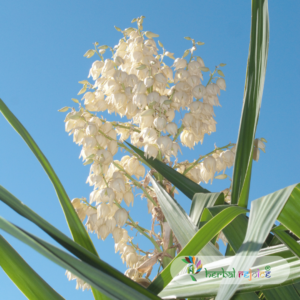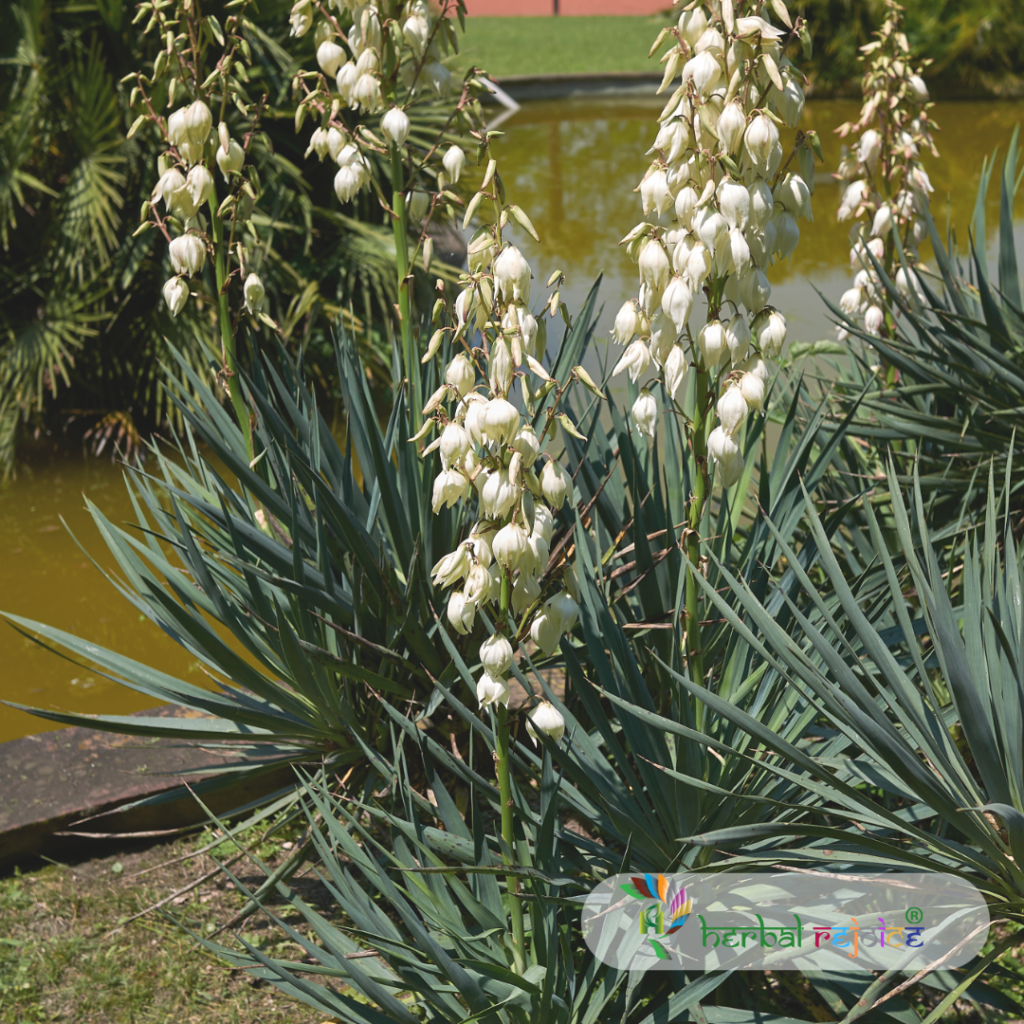Introduction:
Yucca aloifolia Linn., commonly known as Spanish Bayonet, is a plant species belonging to the Liliaceae family, now known as Agavaceae. It is a stunning addition to gardens in warm tropical regions, thanks to its attractive appearance and various medicinal properties. In this article, we will discuss the natural habitat of Yucca aloifolia, its medicinal actions, and the active compounds found in its different parts.
Yucca aloifolia’s Habitat:
Yucca aloifolia is frequently found in gardens across warm tropical regions. With its ability to withstand high temperatures and thrive in well-drained soil, this plant has become a beloved choice for landscaping. Its striking appearance, with long, sword-shaped leaves, adds an exotic touch to any garden.

Medicinal Actions of Yucca aloifolia:
The fruit of Yucca aloifolia has been used traditionally as a purgative, known for its cleansing properties. However, it is important to note that any medicinal use should be done under the guidance of a healthcare professional.
Active Compounds in Yucca aloifolia:
The different parts of Yucca aloifolia contain various active compounds that contribute to its medicinal properties. Some of these compounds include:
1. Aloifoline: This compound is found in the flowers of Yucca aloifolia. Aloifoline has shown specific activity against Lewis lung tumor, as well as other transplanted mouse neoplasms. Its potential as an anti-cancer agent makes Yucca aloifolia an intriguing subject for further research.
2. Indole Melanins: The seeds of Yucca aloifolia contain indole melanins. These compounds have various biological activities and may have potential health benefits.
3. Steroidal Saponins: Yucca aloifolia’s leaves contain several steroidal saponins, such as tigogenin (76%), sarsasapogenin, gitogenin, hecogenin, smilagenin, neotigogenin, and samogenin. These saponins have been studied for their potential medicinal applications, including anti-inflammatory and antioxidant effects.
4. Rhizomes and Inflorescence: Researchers have isolated multiple spirostanol saponin glycosides from Yucca aloifolia’s rhizomes and inflorescence. These compounds hold promise for future drug development and could contribute to the medical industry.
Conclusion:
Yucca aloifolia Linn., also known as Spanish Bayonet, is an impressive plant species found in warm tropical regions. Its popularity in gardens is well-deserved, given its beautiful appearance and potential medicinal properties. From its purgative fruit to the active compounds found in its flowers, seeds, leaves, rhizomes, and inflorescence, Yucca aloifolia offers a wide range of possibilities for further research and exploration. Consider adding this tropical garden wonder to your landscaping and appreciate the beauty and potential health benefits it brings.


